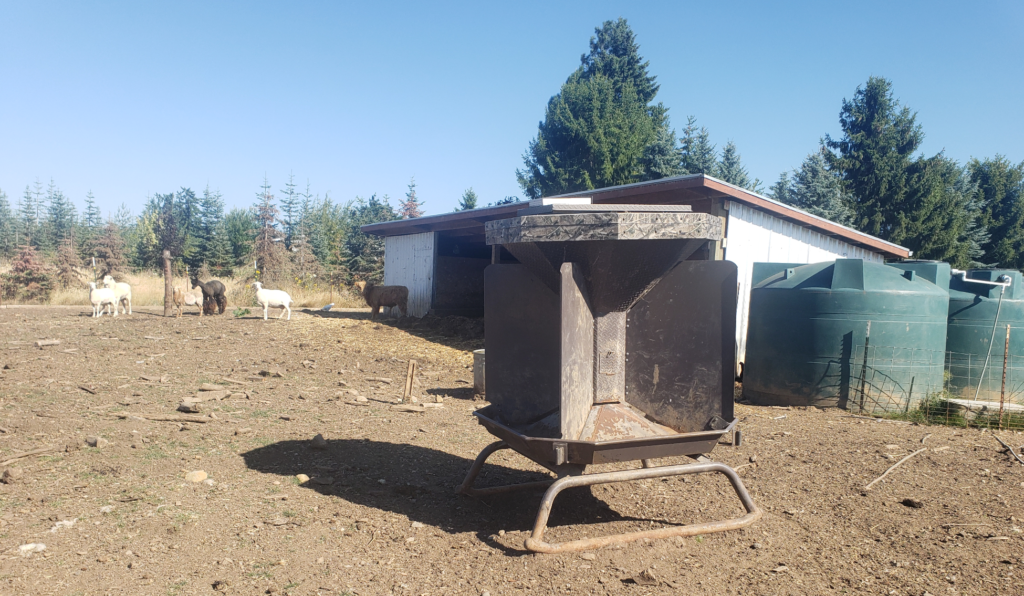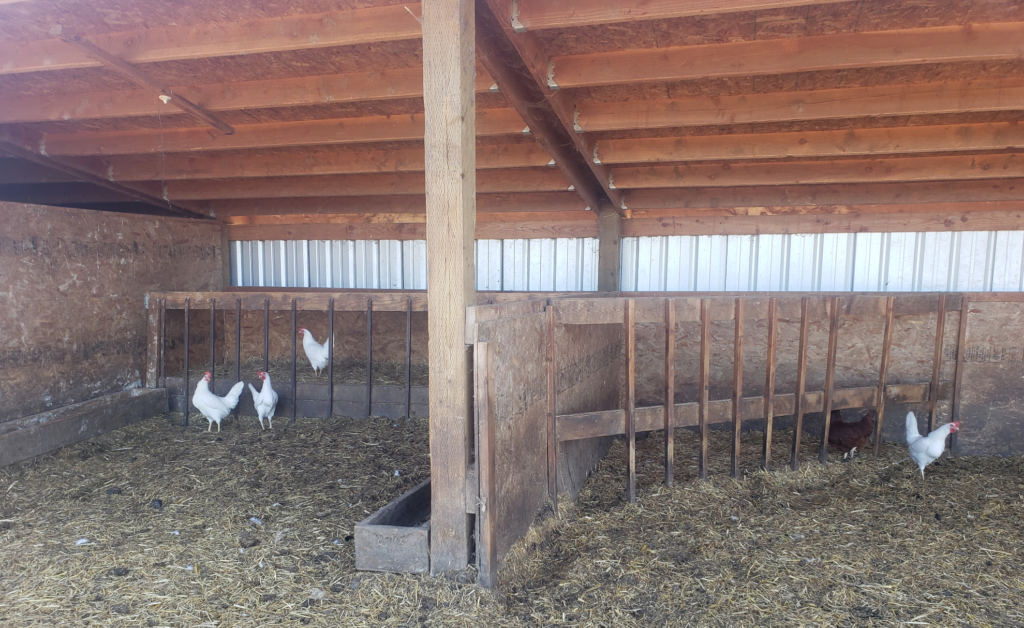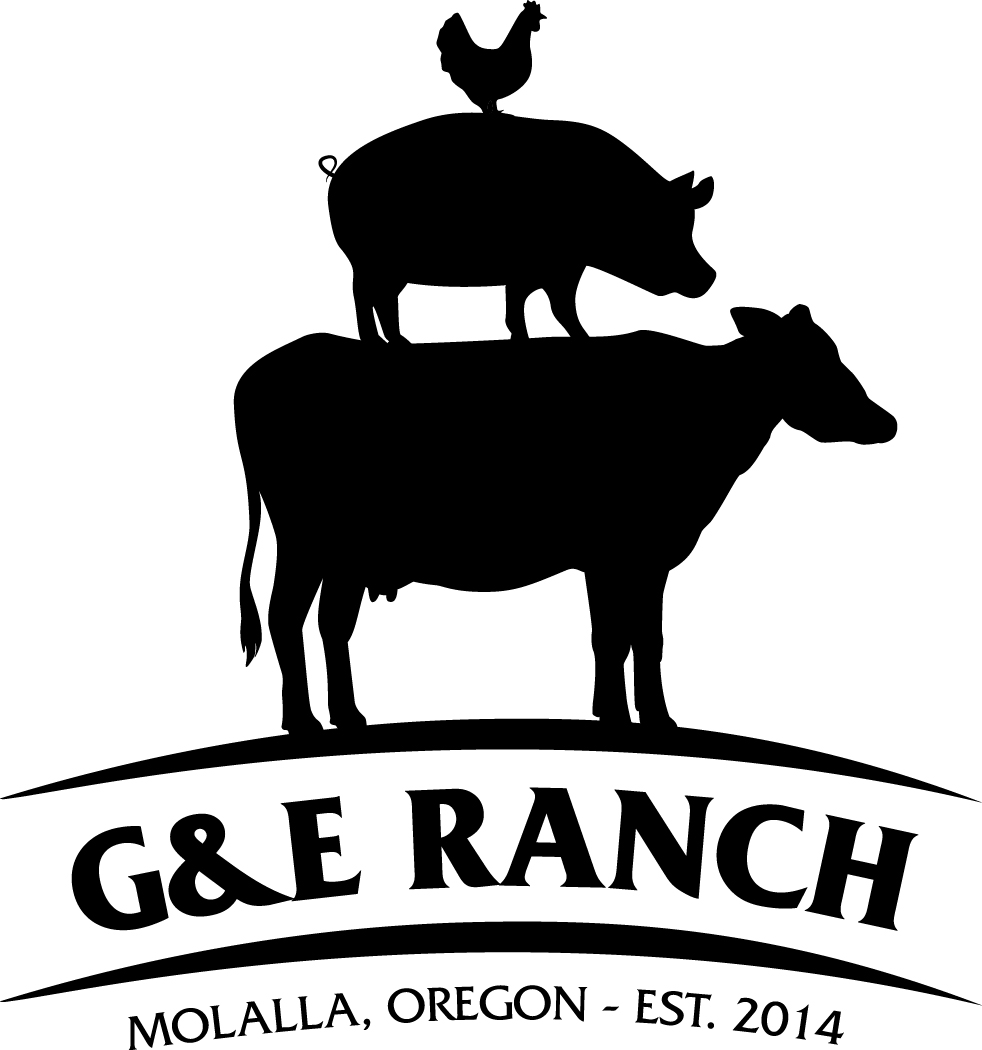Last week, we touched on automatic watering systems, so it is only natural to cover automatic feeders. All animals are different and require different types of feed and feeders. We will touch on the styles we have around the Ranch and their functionality. Some are in use year-round while others are seasonal.
First, the most sophisticates machine and only one we did not build is an MB Ranch King feeder. It’s an elevated 360 degree feeder on skids. The bin on top holds about 450 pounds of pellet feed. A solar panel on top of the bin charges a battery that runs a vertical auger, controlled by a basic timer. The timer controls when and how long the auger spins feed into the elevated trays. Depending on how many animals it is feeding, we may have it go off two times a day for a few seconds each time. While the auger is spinning, food falls freely from the holder and fills up the troughs around the outside for the animals to eat throughout the day. This feeder is taller and feeds the cows, sheep, alpaca and emu. We keep it up in the high use area and use it year-round.

In the high use area, we also have hay feeder built out of scrap rectangular tube steel and 2×2 wood slats that allow the animals to stick their head through to eat. There are 8’ long wooden box-like troughs for pigs (when we have them) that are on the ground. They are low to the ground and hold slop or grain. The final feeder in the high use area is a continuous hog feeder for when we have traditional hogs. It is a four-foot-tall box that is four feet wide and by 2 feet deep. It can hold about 500 pounds of stock food. Near the bottom is a covered trough that is gravity feed. There is a lid on top to fill the feeder and four individual lids down low for hogs to lift with their snout. They reach their heads in to eat.

(currently not filled to encourage animals to eat from the lushes pasture grass)
In the chicken coop, there are two vertical round metal ductwork tubes that are gravity feed to inverted 4-sided roof vents. They are filled from inside the egg collection and food storage vestibule. The feeders drop through the floor, so each feeder is under cover and protected from the weather allowing the chickens to eat away from the rain. These feeders hold a combination of about 75 pounds of food. The duck coop is a modified version of the chicken feeder. It still uses round ductwork, but it starts in the laying and food storage building and slopes outside under a section of roof to the adjacent building in the duck run where gravity fills an adjustable sheet metal elbow. This is also under cover to keep the feed dry. This feed also holds about 75 pounds.

We have two portable cart feeds that were built out of plywood and scrap lumber. One is used to feed the chicks when they are young and still in the barn. The second feeder is on wheels in the poultry tractor and gets moved around the pasture. Each poultry feeder holds about 200 pounds of food. These are used seasonally as needed.

All of these systems of feeding allow us to leave animals and not have to worry about any animal going hungry, but more importantly it takes away the daily requirement of feeding them once or twice a day. Another safety valve we have is that these animals can survive a long time just on pasture, so if a feeder runs out of food for a while, the animals will be just fine.
Greg went and visited a couple neighbor farms this last weekend. It is always fun to see how other people do things and what they focus on. For us at the G & E Ranch, we focus on having happy animals with the least amount of daily attention. That may mean spending 5 hours building an animal feeder, but is saves us time on daily chores. We are always looking for continuous improvement and efficiencies. For some people who have the time, they might enjoy going out to give water and feed to their animals daily. Everyone is different, and that is what makes it all so interesting.

Trackbacks/Pingbacks